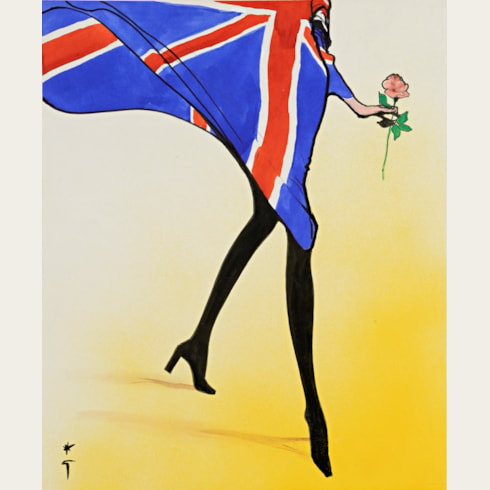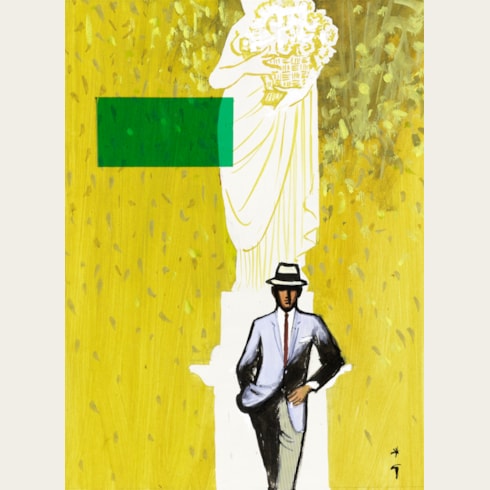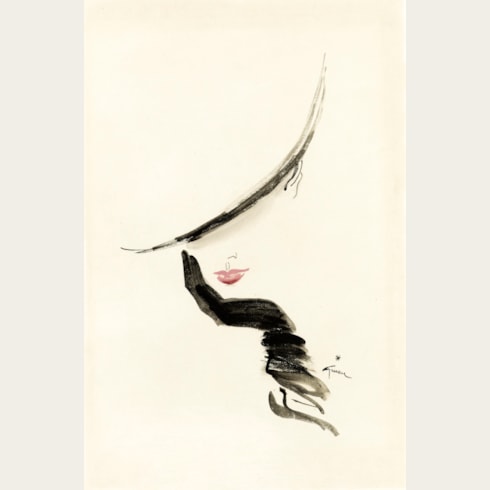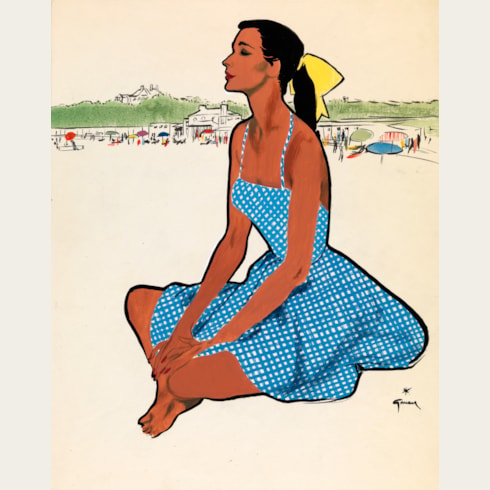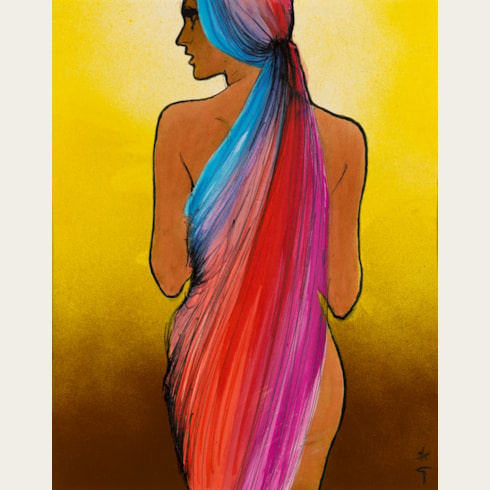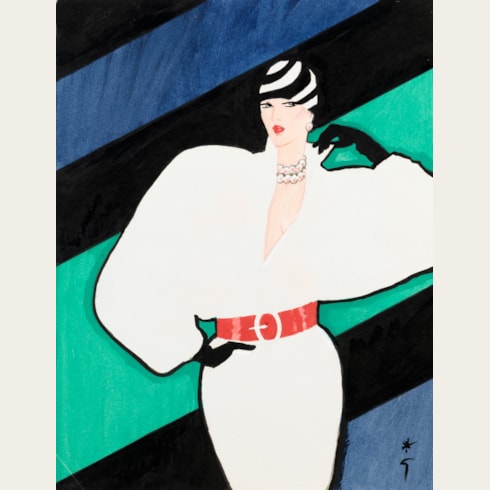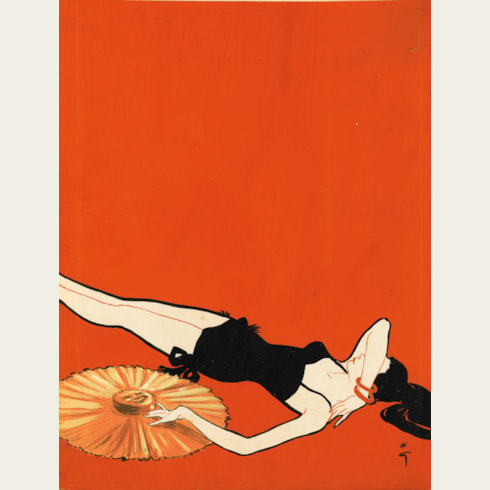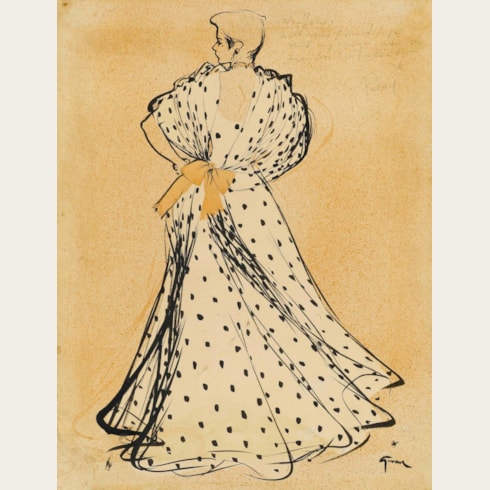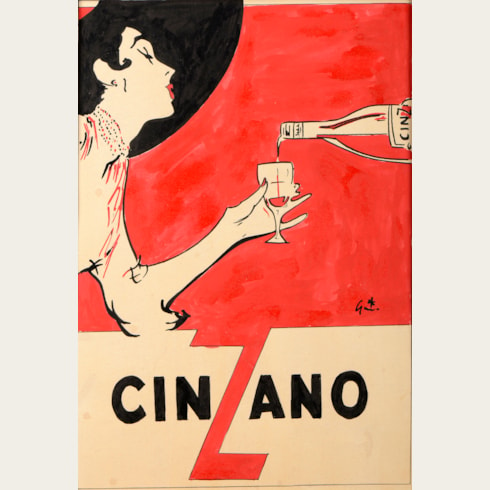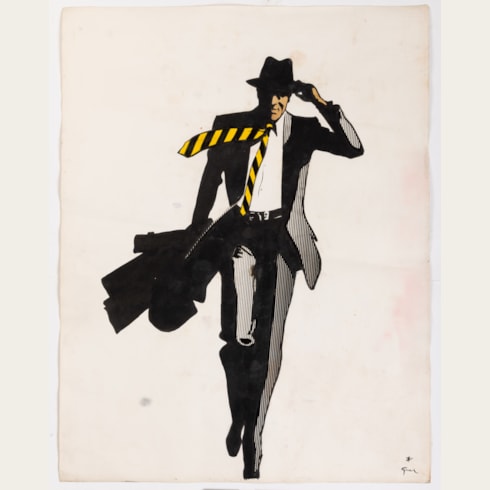René GRUAU
(Covignano 1909 - Rome 2004)
The Hunting Jacket
Signed with the artist’s initial *G at the lower centre.
460 x 362 mm. (18 1/8 x 14 1/4 in.)
This drawing was commissioned from Gruau by the influential fashion editor Fleur Cowles (1908-2009). Cowles employed Gruau to produce a large number of drawings for the magazine Flair, which she created in 1950. As she later recalled of Flair’s approach to the world of fashion, ‘The French and American couture had fascinating treatment, especially by France’s René Gruau, who I brought to America, a painter considered by many to be a modern Toulouse-Lautrec. His women are real, superbly but recognizably so (as women hope to see themselves).’
The inaugural issue of Flair, published in February 1950, included a small booklet introducing Gruau’s work as a fashion illustrator to its American audience. In this sixteen-page insert, it was noted that, ‘The great fashion artist, like Gruau, becomes a force that extends far beyond his own field of illustration...FLAIR believes that Gruau has come of age in a time ideally suited to his talents. His continued growth as a serious painter has given him a sureness of technic [sic], a wideness of range, a subtlety of perception, that is now unrivalled. His innate sense of elegance is Parisian, but the Gruau woman is drawn by a man who has lived in many countries, who has watched her stand out with unstudied effectiveness against any background. Obviously, the artist likes and admires her. She is vibrantly contemporary, with a mind of her own, a hundred varied interests, and a magnificent adaptability to whatever world she moves in. She finds it a complete joy to be a woman. She never pretends to be above fashion, indeed revels in it as her birthright, but her inner security prevails: fashion is never imposed on her, she never submits to the stupidly commonplace or extravagant. FLAIR enormously admires this Gruau woman, confident that she will assume an importance far beyond her place in fashion. An ideal of beauty in our time, she will become part of an invaluable record for the future critic and historian.’
Born to an Italian nobleman and a French mother in Covignano, near Rimini, Renato Zavagli Ricciardelli, Conte delle Camminate, enjoyed a life of luxury as a child, living between Rimini, Milan, Paris and Monte Carlo. He displayed an innate talent as a draughtsman from an early age and, adopting his mother’s maiden name of Gruau, embarked on a career as an illustrator while still in his late teens. Settling in Paris in the early 1930’s, he soon found employment providing drawings of the latest fashions for the newspaper Le Figaro and the fashion magazine Femina. He also recorded the collections of such Parisian designers as Pierre Balmain, Jacques Fath, Jeanne Lanvin, Jean Patou, Elsa Schiaparelli, Cristobal Balenciaga and, in particular, Christian Dior, who was a close friend. Gruau worked closely with the couturier, designing numerous advertisements and posters for the atelier. Indeed, Gruau may be said to have helped to shape, to a large extent, the public image of the house of Dior, particularly during the period of the fashion designer’s brief independent career, between 1947 and his death ten years later.
By the end of the Second World War Gruau’s reputation was firmly established, and had spread beyond France. He lived for several years in America, working for Harper’s Bazaar and Vogue in New York in the late 1940’s and in California for Flair. Although he had designed costumes and scenery for ballet companies in Paris, he declined offers to design costumes for Hollywood films. Following the death of Dior in 1957, Gruau largely abandoned the field of fashion illustration, and began providing designs for advertisements for such products as Martini, Lindt chocolates and Perrier, as well as theatre posters. In the 1980’s he returned to fashion illustration, working in Paris for Vogue France, Elle and Madame Figaro. A retrospective of Gruau’s work was held at the Musée du Costume in Paris in 1989, and at the city’s new Musée de la Publicité in 1999, while the following year a permanent exhibition of his work was inaugurated at the Museo della Città in the artist’s birthplace of Rimini.
Provenance





